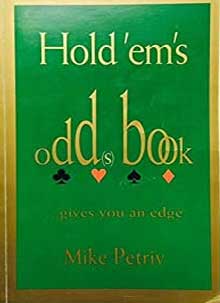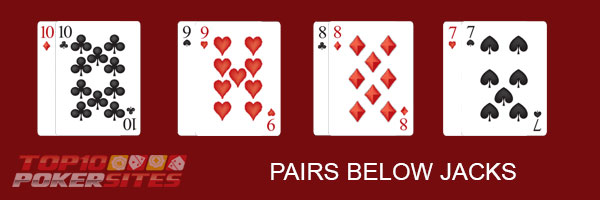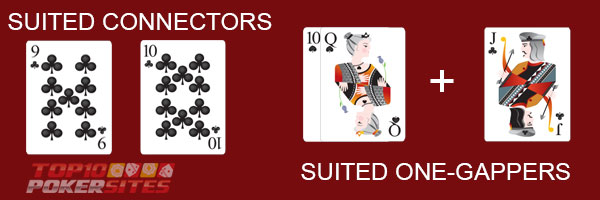Texas Hold’em Starting Hands Cheat Sheet and Best Starting Hands in Poker
Improve your chances of winning in poker by learning the starting hands cheat sheet for Texas Hold’em and How to Get the Most out of Texas Hold’em Starting Hands
Learn How to Get the Most out of Texas Hold’em Starting Hands

Although there are numerous things you should pay attention to, including your opponents, your stack size, your position, and tournament levels, there are a couple of essentials that can apply to every starting hand.
Therefore, I decided to make a nice little cheat sheet that will help you act in the right direction as soon as the hand starts.
Let’s make a quick rundown of things you’re going to learn in this article:
On top of that, I also created a helpful FAQ section at the end of this article. Therefore, if you’re ready to improve your Texas Hold’em skill, make sure to carefully read this article!
What Are Starting Hands in Texas Hold’em?
Whenever a hand in Texas Hold’em starts, each player will receive two face-down cards from the dealer that only they will be able to see. These cards are later combined with community cards that are revealed after every betting round.
However, before you are able to make a valid poker hand using community cards, you need to take part in the pre-flop betting round. Essentially, you need to decide what to do based only on your two hole cards.
This is not an easy task, but it could be facilitated if you stick to some guidelines that are pointed out in this article.
Poker Is All About Odds
Before I proceed with discussing individual hands, I just want to make a short point about poker.Although Texas Hold’em, as well as many other poker variations, is a game of skill, many people don’t deny the element of luck that is present. However, knowing your odds at any point in the game is something that could help you significantly when it comes to choosing your actions.
That’s why I am going to discuss odds and probabilities with every hand and tell you how these can affect you and other players during a single poker hand.
Playing in Position — How Your Position at the Table Affects Your Outcome
The position is something you should definitely pay attention to during the pre-flop betting round. Poker players generally divide positions into three main categories: early, mid, and late positions.
Players who are the first to act are said to be in an “early” position. Those who get to act last are in a “late” position. Naturally, those who are in late position usually have a certain advantage as they get to make their decision after seeing what other players decided.
This is extremely important in the starting hand. While some hands may be playable when you’re in late position, they should be taken out of the equation in early positions.
Pairs — What to Do When You Get a Pair as a Starting Hand?
Since players only receive two hole cards in Texas Hold’em, pair is basically the best thing you can get. Yet, you have to keep in mind that no matter how good things look pre-flop, all of that can change after the flop cards are revealed.
The rule of thumb is that you should get money if the pot if your pair improves with the flop. However, there’s one thing you need to know — some pairs are better than others. Therefore, let’s take a look at individual card pairs as your starting hands.
Pocket Aces
Pocket aces. The bullets. Pocket rockets. Pocker lovers have been quite creative when it comes to naming a pair of aces, as it is a very welcome sight in poker. In fact, the best combination of hole cards you can receive is pocket aces.
Statistically speaking, you can only get these once in every 221 hands, meaning you should immediately start working on maximizing the value right away. In other words, the most passive player in the world would make a raise pre-flop with the bullets in their hand.
Post-Flop Pocket Aces
Although you cannot get a better hand than a pair of aces, that could change a lot once the initial three cards are revealed on the flop. Usually, if you don’t improve, just make sure not to stack off to insignificant two pairs or sets.
The good thing about aces is that they are the highest card in poker. Therefore, there’s literally a 0% chance of getting an overcard on the flop.
Pocket Kings
After pocket aces, pocket kings are the second-best starting poker hand. Some very passive and tight players might fold the popular “cowboys” if they’re in a late position and conclude that it’s the best thing to do. However, it doesn’t happen much, and the most logical thing to do is to raise the pot money pre-flop.
Post-Flop Pocket Kings
The only thing that you don’t want to find on the flop is an ace, as that significantly increases the chances of someone else creating a pair of aces. However, if you have an overpair, then feel free to add more chips to the pot and get the most from your hand.
The probability of getting an overcard (in this case an ace) when holding KK is somewhere around 23%.
Pocket Queens or Jacks
QQ or JJ in your pocket should also mean that you definitely need to play your hand in any position. Yet, these two pairs are pretty much foldable in many situations, especially if you’re in a late position and you see other players making a re-raise. If you decide to call in that situation, you might get in trouble afterwards.
Post-Flop QQ or JJ
If there was a lot of re-raising on the pre-flop, you should continue with betting on the flop only if you improve your hand. In this case, it’s important to keep an eye on your opponents to see if they show signs of weakness and act accordingly, despite not improving on the flop.
Pairs Below Jacks
Getting TT, 99, 88 or 77 as hole cards is considered playable in every position. On the other hand, 66 and 55 are only advised to play if you are in a mid or late position. Finally, 44, 33 and 22 should only be considered if you’re in a late position.
Yet, this is something you shouldn’t take for granted. All hands that are below a pair of jacks are not facing raises or re-raises, especially if you’re in a late position. However, you still want to be careful when raising bets.
Post-Flop with Pairs Below Jacks
If you don’t manage to hit a set when the flop cards are on the table, you should consider folding. The lower your pair is, the greater the chance that someone else has already managed to make a pair that is higher than yours.
Odds of Facing an Overcard
The main idea behind pairs is to make sure that there’s a minimum chance of your opponents getting a higher pair. However, the lower your starting hand pair is, the higher the chance there will be a higher card on the flop.

According to Mike Petriv’s Hold’em Odds Book, here are the odds for every pair you can have as pocket cards.
- KK — 23%
- QQ — 43%
- JJ — 59%
- TT — 71%
- 99 — 81%
- 88 — 88%
- 77 — 93%
- 66 — 97%
- 55 — 99%
- 44 — 99.7%
- 33 — 99.9%
Top-Pair Hands — What Are They and How to Play Them?
Whenever you receive a pair of cards and get two different but high-ranking cards, you’re in a good spot. Basically, if you receive, for example, an ace and a king, you are in a good starting position to dictate the hand.
These hands are often referred to as “top-pair” hands, as you have an opportunity to create a top pair on the flop with one of them.
During these hands, the goal of every player is to trap loose players into making the pot larger so that they can make a huge profit. Moreover, top-pair hands can come in handy when you have a position and nobody raised before you.
On the other hand, the rule many poker players accept is that you shouldn’t call a raise if you have them, as that usually leads to losing a significant amount of real money.
Suited Connectors/Suited One-Gappers — An Opportunity You Shouldn’t Miss
What many newcomers to the world of poker completely neglect are card suits. These can be beneficial in creating a flush or a straight (or even a straight flush, if you’re really lucky).
Suited connectors are basically of the same suit and are usually ranked pretty closely. For example, 9 and 10 are the two cards that can become very lucrative if you manage to connect them with three additional cards of the same suit or three cards that can help you complete a straight.
Suited one-gappers can be cards such as 10 and Q , meaning there’s a gap between them that can be filled with a J , if you’re lucky.
The point is — these hands are great, but you have to take into account that they are risky as well, as one doesn’t often hit straights or flushes.
In fact, if you’re in an early position, the best you can do is fold your cards and wait for the next hand. On the other hand, middle/late positions are more suitable and will allow you to raise if you’re feeling lucky.
Post-Flop One-Gappers
Once the flop cards are face-up, make sure to carefully analyze your hand. The best you can do is immediately land a flush or a straight, but the odds for that are not that great.
Yet, landing a pair or a draw is quite possible, and you should consider your hand good if that happens.
A draw in poker is when a player needs one card to complete a hand. For example, if you have 9 and 10 in your pocket and you land 2 , 5 , and 6 , you basically have a draw — four cards of the same suit. However, to create a valid poker hand, you need five cards of the same suit. Luckily, you have two more chances to get one on the turn or on the river.
Ultimately, playing one-gappers is always a bit riskier than playing high pairs. However, many professionals agree that this type of hand is great for playing huge pots with the least investment.
Suited Aces — Big Pots for Small Investment
Suited aces refer to hands where you have an ace and a lower card of the same suit. Just like suited connectors, these types of hands shouldn’t result in your making a huge investment. Their goal is to take down big pots without actually investing too much. In other words, getting into a raising competition is the last thing you need with either suited aces or suited connectors.False Friends — Hands That Look Great but Aren’t
Sometimes, new players think they are on the right track after reraising with, say, K and 10 . These two cards are both high and may look good at first. However, they aren’t suited and are just going to lose you money.Regardless of the position, it’s almost never wise to play these hands, as the chances of getting a valuable hand on the flop are lower than usual.
Post-Flop False Friends
If you had a good gut feeling and decided to proceed with the hand on the pre-flop, there’s a chance that you didn’t get anything on the flop. Even if you make a pair, it should at least be a pair of aces, kings or queens.In every other situation, the best way out is to just fold while you still have time.
Final Thoughts
Starting hands may not tell you much about your final odds, but they are definitely helpful when it comes to creating your strategy for the hand. It’s a perfect time to scan your opponents and find out more about them, especially if you’re in a late position.This article should help you learn what to do once you receive a specific combination of cards, but you shouldn’t take these pieces of advice as final.
Poker is not math — it’s jazz. It’s up to players to assess the situation at the table and ultimately decide what to do. Therefore, make sure to use this article as the initial guide and try improvising whenever necessary.
FAQs
What is the best starting hand in Texas Hold’em?
Statistically speaking, the best combination of hole cards you can get is a pair of aces. With them, there’s no chance of getting an overcard on the turn.
Should I play every pair?
Although pairs are always a welcome sight, it all depends on two things — your pair ranking and your position. Lower pairs are usually more playable in mid/late position.
How a position affects starting hands?
Those who are in an early position have a disadvantage, as they don’t know how other players will play their cards. Therefore, no matter how good your starting cards are, always be more careful when you’re under the gun.
What is the worst starting hand you can get?
If your cards are far away from each other in rankings (say a 3 and a J) and do not even have the same suit, then you should definitely fold right away if you don’t want to bluff.
What are the suited connectors?
Suited connectors are cards that are relatively close to each other ranking-wise (a J and a Q, for example) and usually are of the same suite. These cards are sometimes worth playing, as they offer the possibility of making a straight or a flush.
Is the starting hand guide applicable in both cash games and tournaments?
This guide is mostly for cash games, as the blinds remain the same throughout this type of competition. On the other hand, tournaments have levels that may require you to adopt a different strategy with your starting hands. Overall, you should be more loose and aggressive with blinds going up, but it all depends on your opponents and your stack sizes.





